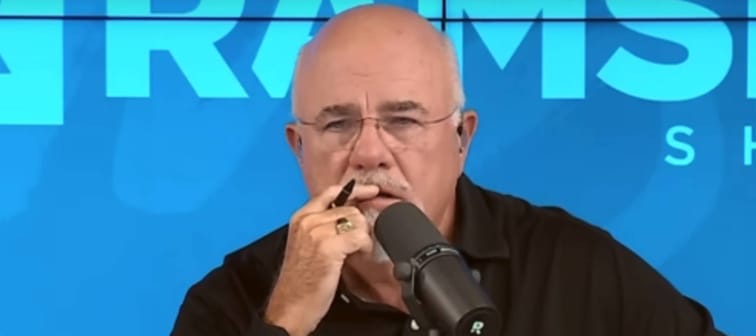America’s student debt burden
John, who lives in Asheville, is a first-year student studying physical therapy with $78,000 in student loan debt. He told Ramsey his fiancée has another $308,000 in student loans from Sallie Mae and Federal Student Aid.
Altogether, the couple is staring at an eye-watering $386,000 in student debt.
That’s significantly higher than the national average. The national average balance of federal student loan borrowers is $35,210, according to Federal Reserve data. Altogether, America’s student debt pile is worth $1.74 trillion.
This debt burden would be a lot lighter if borrowers saw a decent return on investment. If a university degree unlocked better jobs and higher wages, graduates wouldn’t have as much trouble managing interest payments. Unfortunately, that’s not the case.
The average annual salary for a college graduate with a bachelor’s degree is $74,500, according to the Education Data Initiative. Most borrowers take 20 years to pay off their debt. Some never pay it off at all.
John and his fiancée are in a similar situation. She’s earning $75,000 a year before taxes as a physical therapist. He’s training to be a physical therapist too, so it’s likely he’ll earn a similar amount in a few years. Together, Ramsey estimates their future earnings are roughly $150,000 a year.
“That’s the shovel-to-hole ratio,” Ramsey says. “Your shovel is your income and the hole is $400K.” Fortunately, he believes there’s a way to dig out of this hole — and relatively soon.
Kiss your credit card debt goodbye
Millions of Americans are struggling to crawl out of debt in the face of record-high interest rates. A personal loan offers lower interest rates and fixed payments, making it a smart choice to consolidate high-interest credit card debt. It helps save money, simplifies payments, and accelerates debt payoff. Credible is a free online service that shows you the best lending options to pay off your credit card debt fast — and save a ton in interest.
Explore better ratesDigging out of a financial hole
Ramsey recommends extreme sacrifices to get rid of debt quickly. If they live on $50,000 and pay off $100,000 each year, it’ll take them four years to pay off their loans, he says. Of course, the loan repayment could be faster or slower, depending on their lifestyle choices and ability to generate more income.
Working overtime could deliver an extra $20,000 annually, Ramsey estimates. That puts the couple in a much better position to reduce their debt — and they can supercharge that by cutting back on expenses. “We’re talking beans and rice,” says Ramsey. “Tuna fish is for broke people. You’re broke people.”
Ramsey’s advice might sting, but it certainly makes sense on paper. And there are instances of people paying off debt rapidly by cutting their budget down to the bone. However, implementing such a plan is easier said than done. The personal savings rate in the U.S. is just 3.4%, while student loans for graduate degrees could have interest rates as high as 8%. In other words, the debt grows faster than people’s income or savings.
This is why a growing number of student loan borrowers feel trapped and the debt burden keeps ballooning every year. So John and his fiancée may need to make extraordinary sacrifices — and hope for some good luck — to escape the crisis.
The richest 1% use an advisor. Do you?
Wealthy people know that having money is not the same as being good with money. Advisor can help you shape your financial future and connect with expert guidance . A trusted advisor helps you make smart choices about investments, retirement savings, and tax planning. Try Advisor now.








